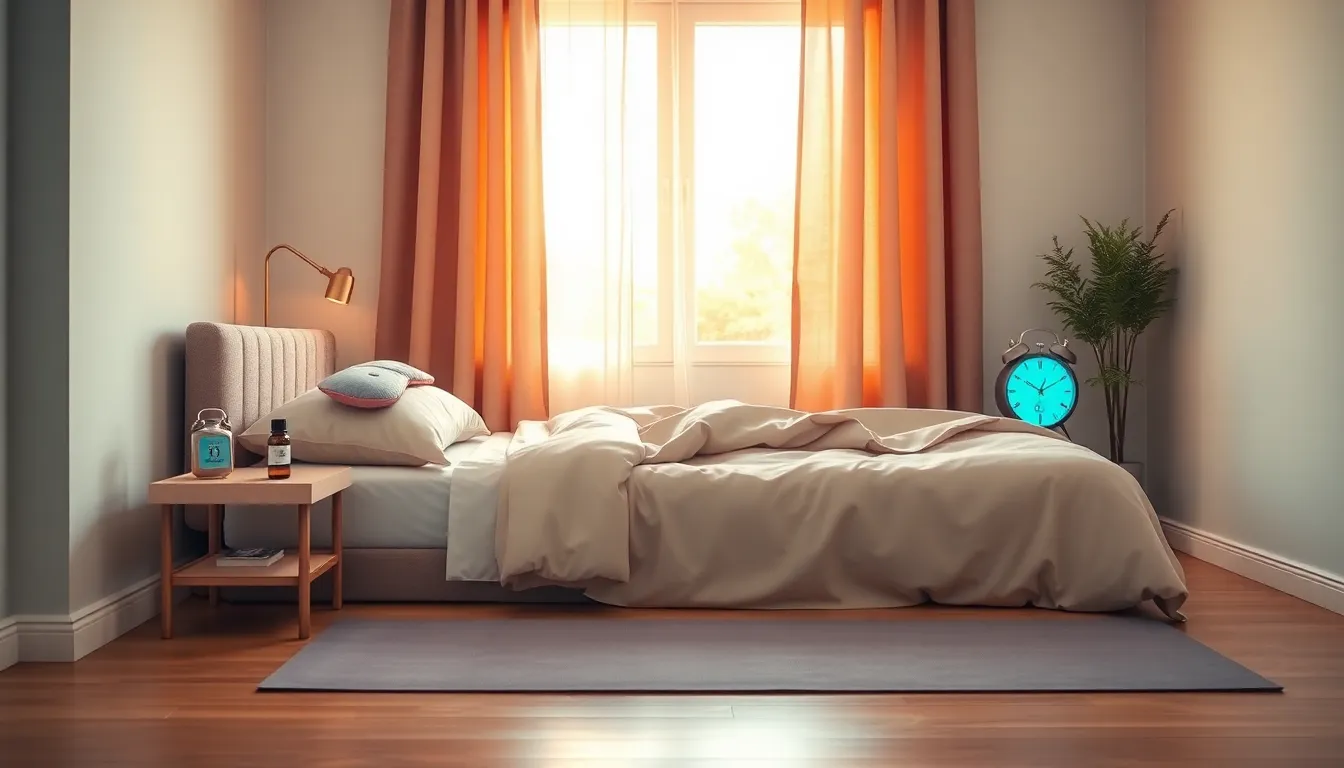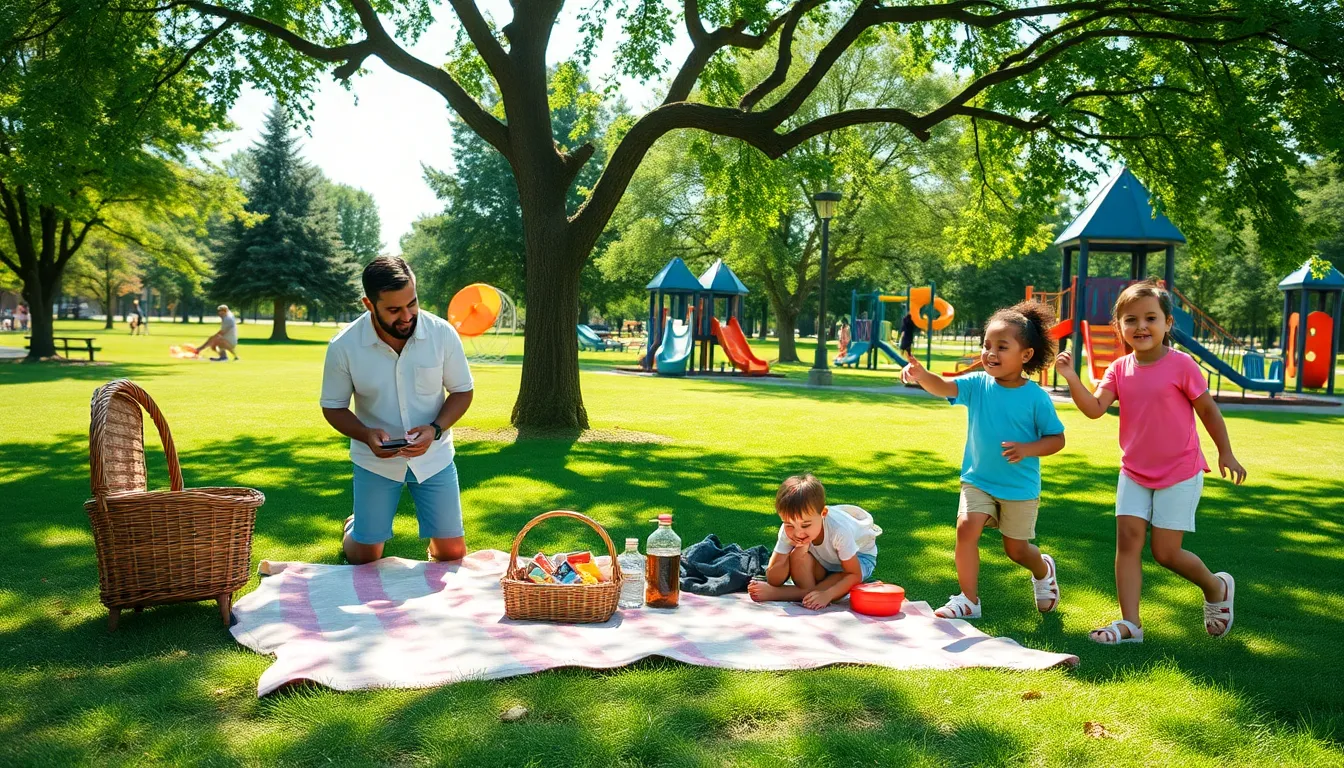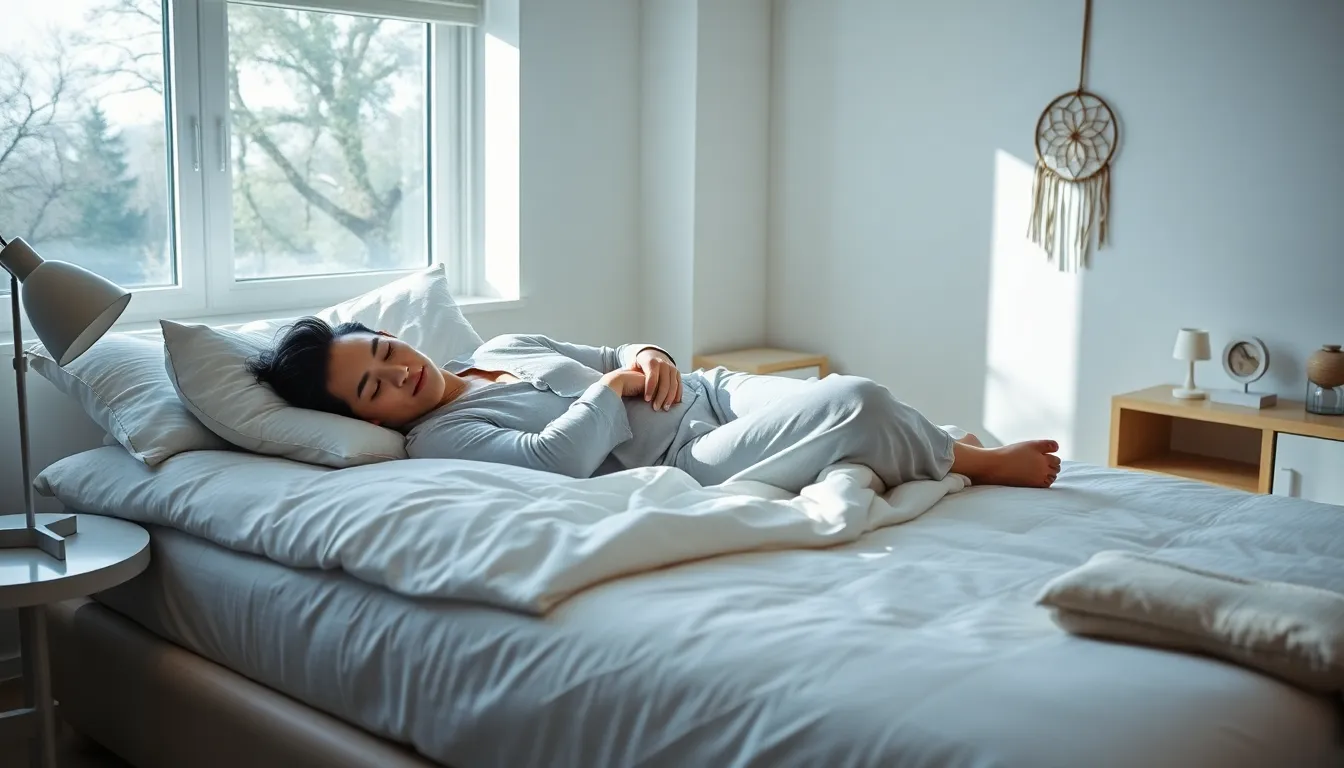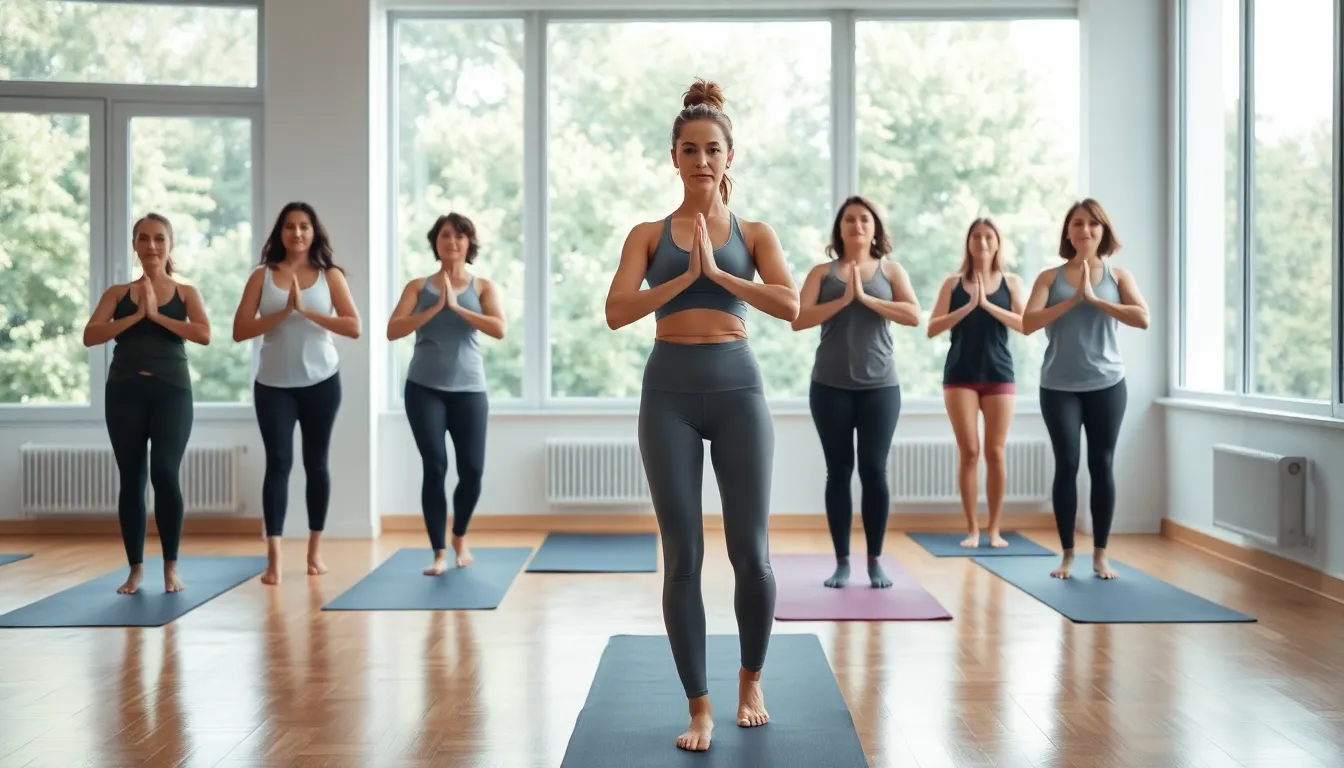Ever wondered how long that blissful active sleep lasts? You’re not alone. Active sleep, often a little unsung hero in our snooze cycle, packs a punch, both for the mind and the body. Think of it as the time when your brain is busy organizing your thoughts, all while you’re apparently just dreaming of unicorns and rainbows. Let’s jump into the intricacies of active sleep and uncover just how long this enchanted sleep state really lasts.
Table of Contents
ToggleUnderstanding Active Sleep
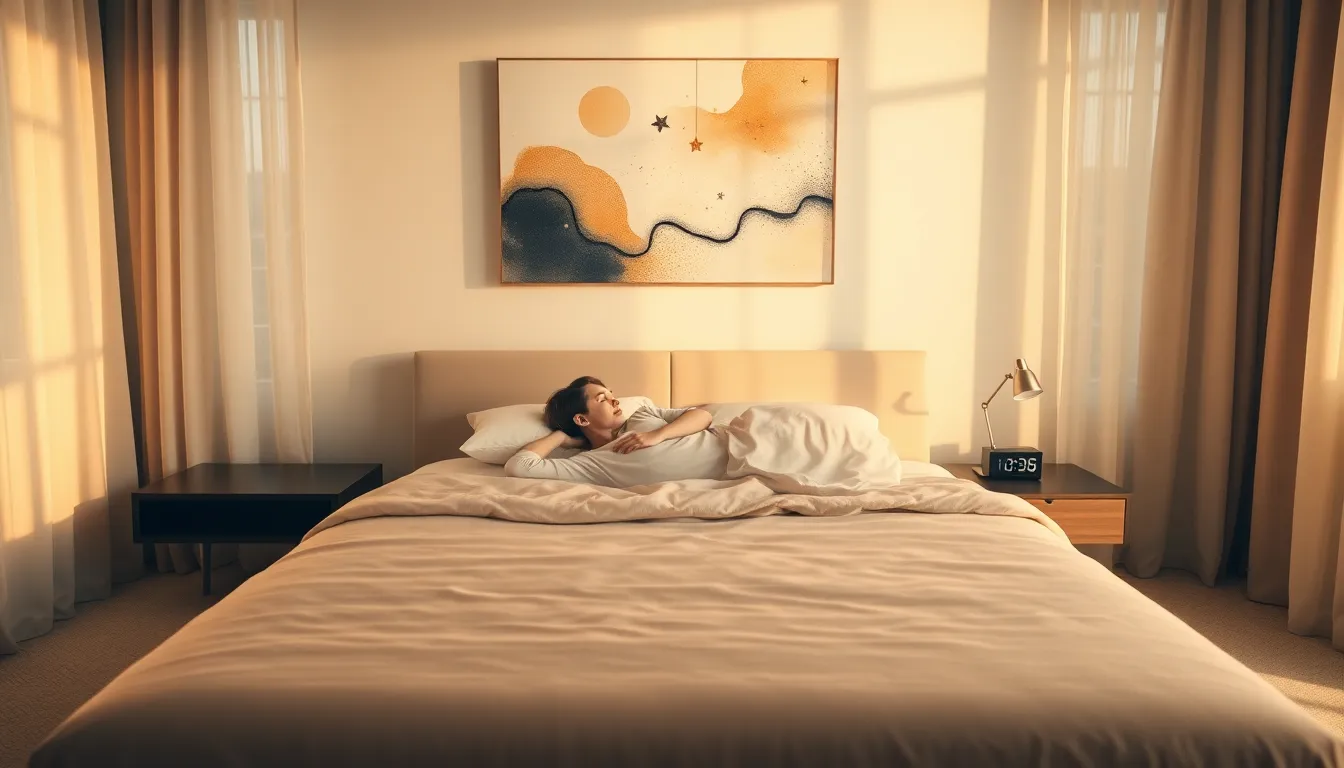
Active sleep, also known as REM (Rapid Eye Movement) sleep, is a fascinating phase of the sleep cycle where the brain is at its most active. During this time, vivid dreams occur and the brain processes emotions, consolidates memories, and enables learning. It’s not just a restful state, it’s a crucial period for mental health. Although it sounds like a simple concept, the dynamics of active sleep are anything but straightforward, reflecting a remarkable blend of brain activity and physiological changes.
This vital sleep stage was once thought to serve no purpose other than to allow the brain to take a little trip. Recent studies, but, highlight its crucial role in emotional regulation and cognitive function. When you think about how many hours people spend dreaming each night, it’s worth exploring just how long that active sleep usually lasts.
The Stages of Sleep
To understand active sleep, one must first grasp the entire sleep architecture. Sleep is divided into two primary categories: Non-REM and REM sleep.
- Non-REM Sleep: This consists of three stages. The first stage is light sleep, where one drifts in and out of slumber. In the second stage, the heart rate slows and body temperature drops. Finally, the third is deep sleep, crucial for physical restoration.
- REM Sleep: Enter the realm of dreams. Active sleep happens primarily during this phase, usually occurring about 90 minutes after falling asleep. A typical adult cycles through these stages multiple times a night.
Each cycle lasts about 90 to 110 minutes, with REM sleep becoming longer with each passing cycle, roughly extending from 5 to 45 minutes at a time, depending on various factors.
Factors Affecting Active Sleep Duration
Several factors influence how long active sleep lasts. Let’s look at a few:
- Age: Children typically spend more time in REM sleep than adults, while older adults may experience a decrease in sleep quality and duration.
- Sleep Quality: Good sleep hygiene and a consistent sleep schedule can enhance the overall quality of sleep, leading to longer durations of active sleep.
- Lifestyle Choices: Factors like diet, exercise, and stress levels can significantly affect active sleep. High caffeine intake or irregular sleep patterns can disrupt the balance.
- Medications: Certain medications may suppress or enhance REM sleep, further affecting its duration.
These elements create a unique tapestry for each person, influencing how long they spend actively dreaming.
Differences Between Active Sleep and Other Sleep Stages
Active sleep differs markedly from other sleep stages. Light and deep sleep contribute mostly to physical restoration: meanwhile, active sleep is crucial for mental rejuvenation.
- Brain Activity: While brain waves in non-REM sleep display slow patterns, in REM sleep, they become fast and similar to wakefulness, reflecting heightened cognitive function.
- Physiological Features: If you find it puzzling that eye movements occur during active sleep, you’re not alone. The body also experiences increased heart rate and breathing irregularities during this time.
- Dreaming: Vivid dreams are a hallmark of active sleep, whereas during non-REM sleep, dreams tend to be less memorable or even non-existent.
Understanding these differences can highlight the importance of incorporating adequate active sleep into nightly routines.
The Importance of Active Sleep
Active sleep is more than just fun dreams and intriguing narratives. Scientifically, it plays a pivotal role in maintaining mental health. Here’s why:
- Memory Consolidation: During active sleep, the brain strengthens new memories and connections, improving learning and retention abilities.
- Emotional Processing: REM sleep contributes to the regulation of emotions. It helps process experiences and cope with stress. Without adequate active sleep, mood swings and irritability may creep in.
- Creativity Boost: Some of the most innovative ideas stem from dreams experienced during this sleep stage, showcasing the links between creativity and active sleep.
These benefits underscore the necessity of prioritizing healthy sleep habits that promote sufficient active sleep duration.
How to Maximize Active Sleep
If you’re eager to extend your time in active sleep, several habits can help:
- Establish a Routine: Consistency is key. Going to bed and waking up at the same time every day helps set a healthy sleep cycle.
- Optimize Sleep Environment: Keep the bedroom dark, quiet, and at a comfortable temperature. Investing in blackout curtains and white noise machines might be beneficial.
- Limit Stimulants: Cut down on caffeine and screen time before bed. These can disrupt your ability to fall into deep sleep and, so, REM sleep.
- Practice Relaxation Techniques: Activities like meditation, gentle yoga, or reading a book can help calm the mind, making it easier to drift into deeper, more effective sleep cycles.
By enhancing your overall sleep quality, it’s likely that your active sleep duration will improve, allowing for more vivid dreams and increased benefits from this impressive sleep phase.

